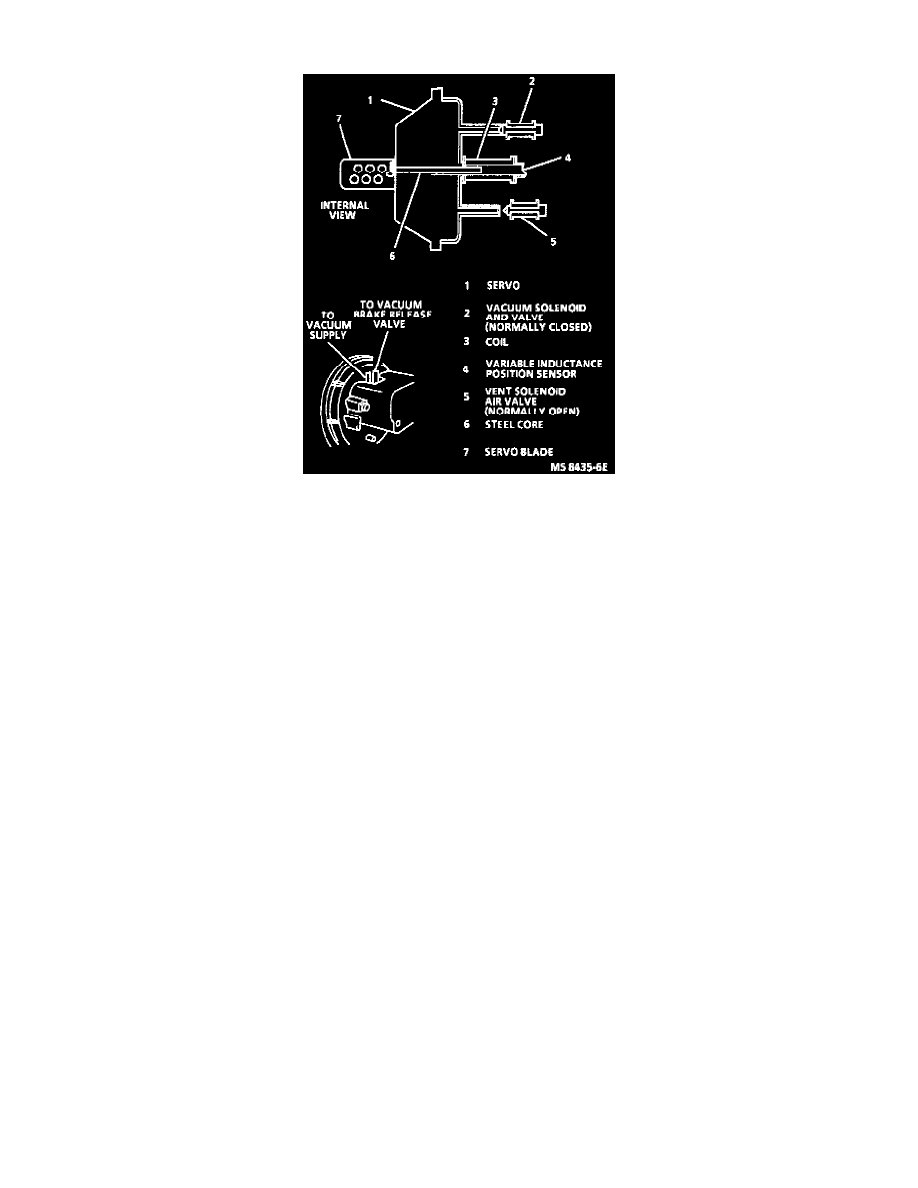Riviera V6-3.8L SC VIN 1 (1995)

Cruise Control Servo: Description and Operation
Typical Servo Unit
DESCRIPTION
The servo consists of a vacuum-operated diaphragm, a normally-open vent valve to vent the diaphragm chamber to the atmosphere, a normally
closed vacuum valve to connect the diaphragm chamber to the vacuum source, and a variable inductance position sensor. The servo operates the
throttle in response to command signals from the PCM.
The following describes the servo function for various speed conditions when the system is on and set.
Steady Speed
The PCM maintains both the servo vacuum and vent valves in the closed position. Vacuum is trapped in the servo, and the throttle is constant.
Vehicle Losing Speed
The PCM energizes the servo vacuum solenoid to open the vacuum valve. The servo vacuum level increases, and the throttle is increased to bring
the vehicle up to speed.
Vehicle Gaining Speed
The PCM deenergizes the servo vent solenoid, opening the vent valve. Servo vacuum is reduced, and the throttle is decreased by throttle return
spring action to bring the vehicle down in speed.
Under normal road and load conditions, the vacuum valve opens when the vehicle speed drops 0.32 kph (0.2 mph) below the set speed. When the
vehicle speed exceeds the set speed by about 5 kph (3 mph), the vent valve goes to a constant-open position.
The vent valve goes to an open position (solenoid de-energized) when:
-
the brake pedal is depressed;
-
the servo position sensor coil in the servo opens;
-
the system loses electrical power;
OR
-
the ignition is turned "OFF."
The servo position sensor provides feedback to the PCM to be compared to the vehicle speed signal. The PCM then determines if speed correction
is needed.
